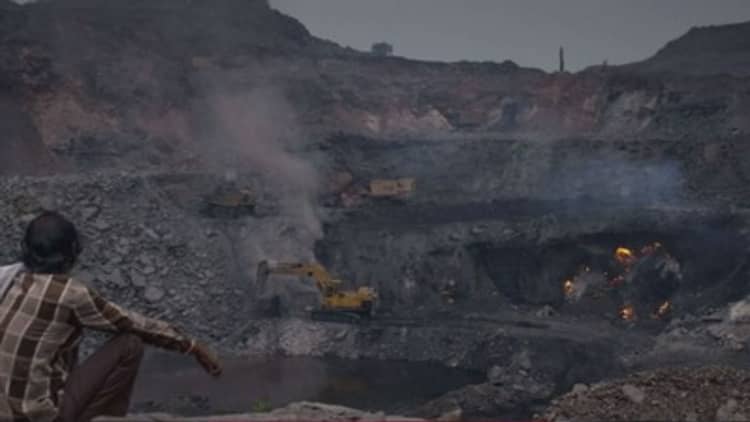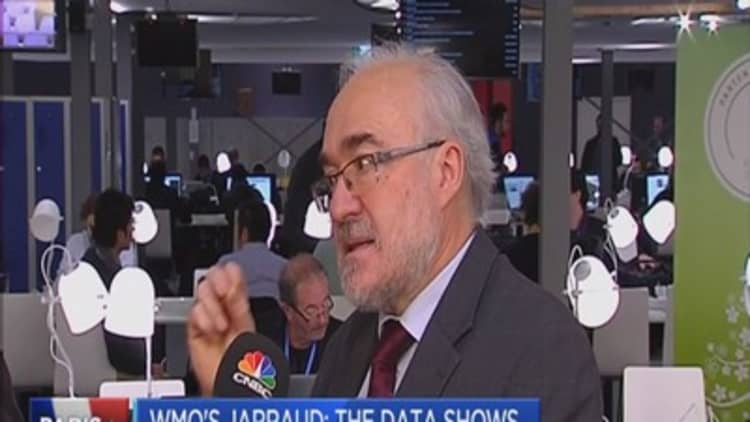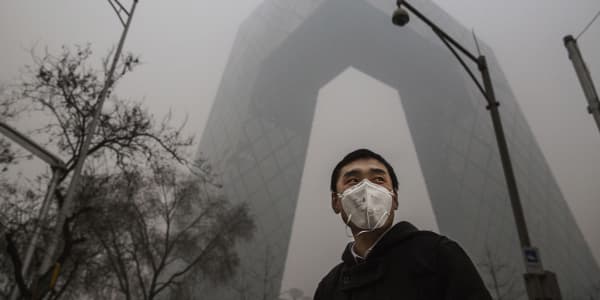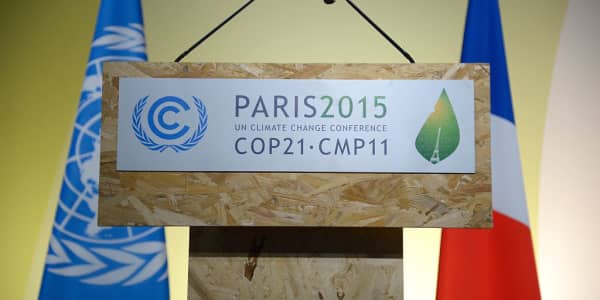
One of India's largest and most productive coal fields is also home to some of the longest-burning fires in the world.
About 70 fires have sprouted up at eastern India's Jharia coal fields, which cover more than 100 square miles and have been mined since the late 1800s. The first recorded coal fired broke out in 1916, and fires have burned there ever since.
It is just one of the thousands of coal fires that are burning around the world — a costly and dangerous phenomenon involving a fuel source that has helped power economic development but is under attack in the age of global warming.
India's government reportedly hopes to increase production at the fiery mine, even as representatives from New Delhi discuss the effects of carbon emissions on climate change at the COP21 summit in Paris. Indian Prime Minister Narendra Modi has reportedly charged officials with putting out the fires at Jharia, in the hope of improving output. The government has already spent money to move villages and settlements away from the mines, and those costs are forecast to reach $1 billion, according to Reuters.
Flames at Jharia have been recorded reaching heights of 60 feet, said Glenn Stracher, a professor emeritus of geology and physics at East Georgia State College, who has studied coal fires around the world extensively.
Many of the fires are believed to have started through spontaneous combustion or what is sometimes called self-heating,caused by the oxidation of minerals in the exposed coal. Much of the mining at Jharia is done at the surface, exposing the coal to open air. Certain varieties of coal contain minerals that heat up when they are exposed to oxygen; those minerals can in turn burst into flames.
More than 37 million tons of coal, worth billions of dollars, have been lost to fires at Jharia, and 1.4 billion more metric tonnes are inaccessible because they are blocked by fires, Stracher said.
Another estimate from the company that controls the mine places the amount of blocked coal much higher, at around 2 billion metric tonnes (or roughly 1.8 billion U.S. tons), which would place total losses around $220 billion.
It is also a huge environmental and health problem. The burning coal pumps all sorts of gases and particles into the air, and underground fires at Jharia have created sinkholes that have swallowed people, Stracher said.
"Just imagine the emissions that are being produced by these fires," he said. "I have collected gas samples from different fires, and there are usually 40 to 50 hydrocarbon compounds, and many of them are toxic or carcinogenic. So this stuff is bad, really bad."
Coal mine fires are a global problem, and there are numerous ways they can start, Stracher said. Thousands of coal field fires are burning globally, on every continent except Antarctica. No one has a good idea of the emissions they are producing, and it's hard to estimate, since the fires can be erratic in their behavior — sometimes they calm down, and then sometimes they suddenly intensify.
"There are for sure toxins or poisons in these fires, and they certainly exceed U.S. Environmental Protection Agency standards," he said.

Besides Jharia, some of the world's worst fires are burning in China, which produces coal for export and domestic consumption.
A similar, but less severe set of fires has burned for decades in Centralia, Pennsylvania, after a scheduled burning in a landfill in 1962 spread to the coal underground. Stracher first began studying coal fires after he visited the site.
"I just couldn't believe what I saw," he said. "There were entire valleys engulfed with smoke. And this would have been about 1991, and I said to myself, 'This thing has been burning since '62? And no one's been able to put it out?' I mean the ground was covered in sulfur, the trees and vegetation were dead, there was no animal life anywhere — it was just amazing."
Stracher later studied a Colorado coal fire that started after a forest fire spread to the coal beneath the earth. They can also start from lightning strikes, from mining accidents, such as a spark from a welding torch, or from discarded cigarettes.
"I have even heard that in China there have been some fires started in abandoned coal mines by people illegally distilling whiskey," Stracher said.
In fact, many coal fires start on piles of rock cast aside as waste in the mining process, not in the coal deposits themselves. Those "spoil piles" often have bits of coal or other flammable minerals in them that catch fire and spread to the unmined deposits.
Jharia will remain an important site in India as the country's power needs grow. India has rich coal reserves, but imports much of its coal, since coal brought into the country is subject to fewer regulations than domestically produced coal. That situation costs the country an estimate $15 billion a year, according to Reuters.
Furthermore, Jharia is home to a prized variety of hot burning "coking coal," which is valued for its use in steel-making.
The country taxes coal use (about $3 per metric tonne), and has been under international pressure to curb its use of carbon-based fuels, even though China is a bigger polluter, and the United States, the second largest carbon polluter, has the world's highest per-capita use of coal.
"China is the biggest emitter in the world, U.S. is number two, but India gets a lot of the bad press, because the current models are projecting the largest growth in carbon emission out of India," said David Victor, a professor at the University of California, San Diego School of Global Policy and Strategy.

Coal fires are hard to extinguish, but sometimes pouring sand or nonflammable material on them can smother the flames. Digging trenches around the fires can isolate them, and injecting inert gas into the underground mining tunnels can deprive them of oxygen.
Workers at Jharia have begun using technologies such as remote sensing and GPS to identify areas underground where fires are burning, Stracher said. But he's skeptical that the world's coal fires, including Jharia's, will ever be extinguished, as long as they still have fuel they can burn.
"The burning of coal has benefited civilization, but there are consequences to those benefits," he said.
CORRECTION: An earlier version of this article misstated Mr. Stracher's statement regarding the estimate of how much coal is inaccessible at Jharia due to the coal fires.





